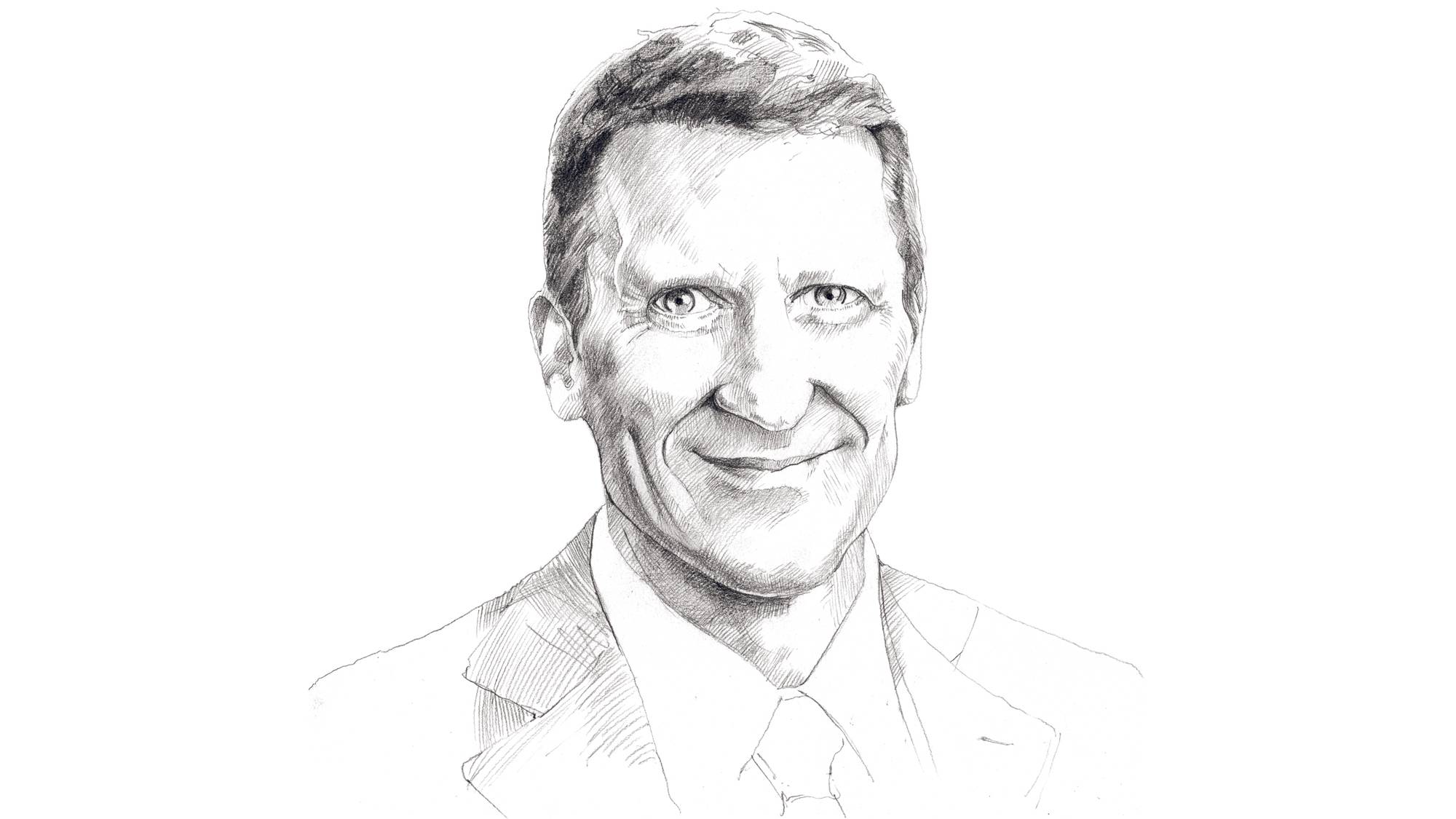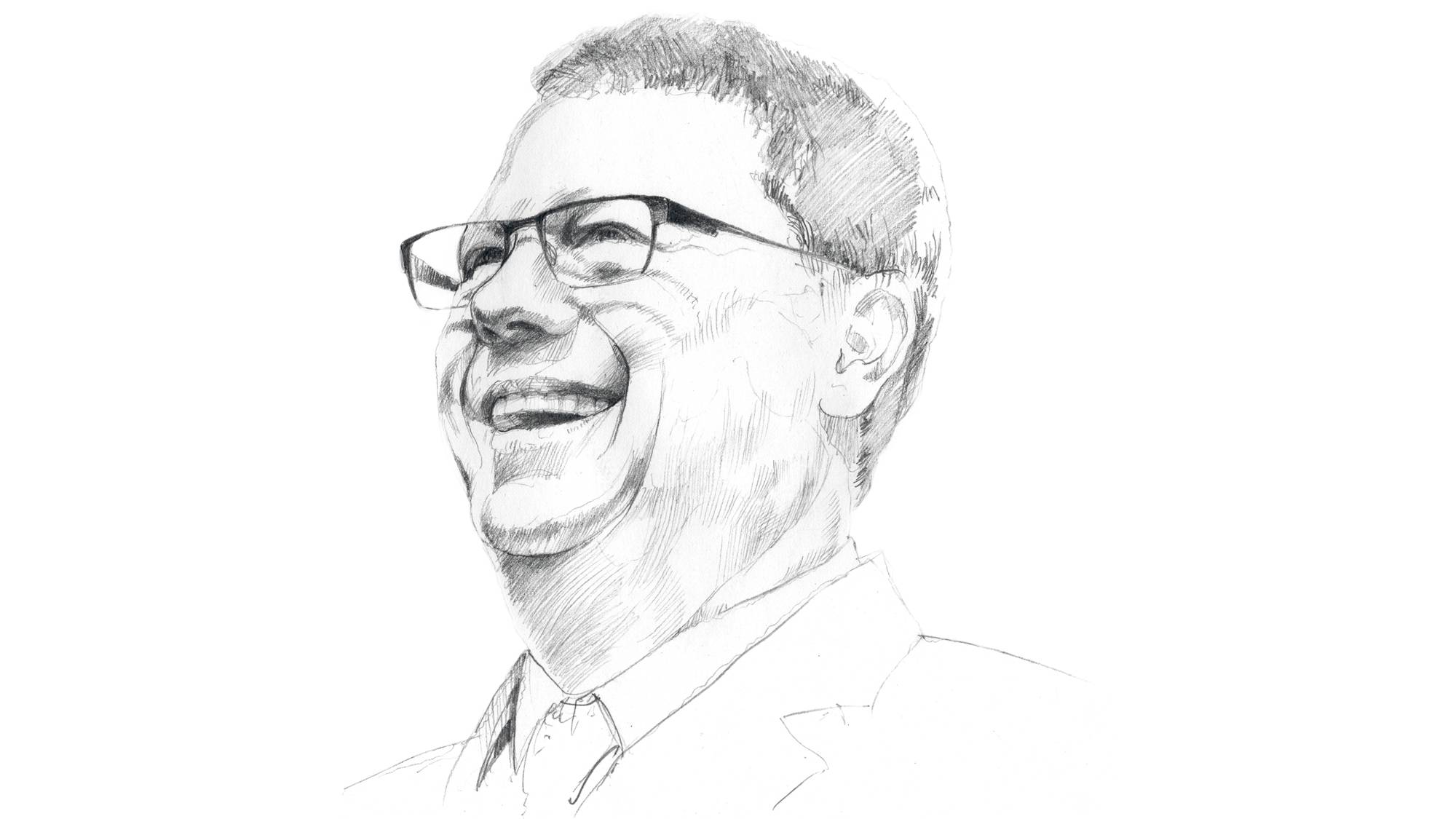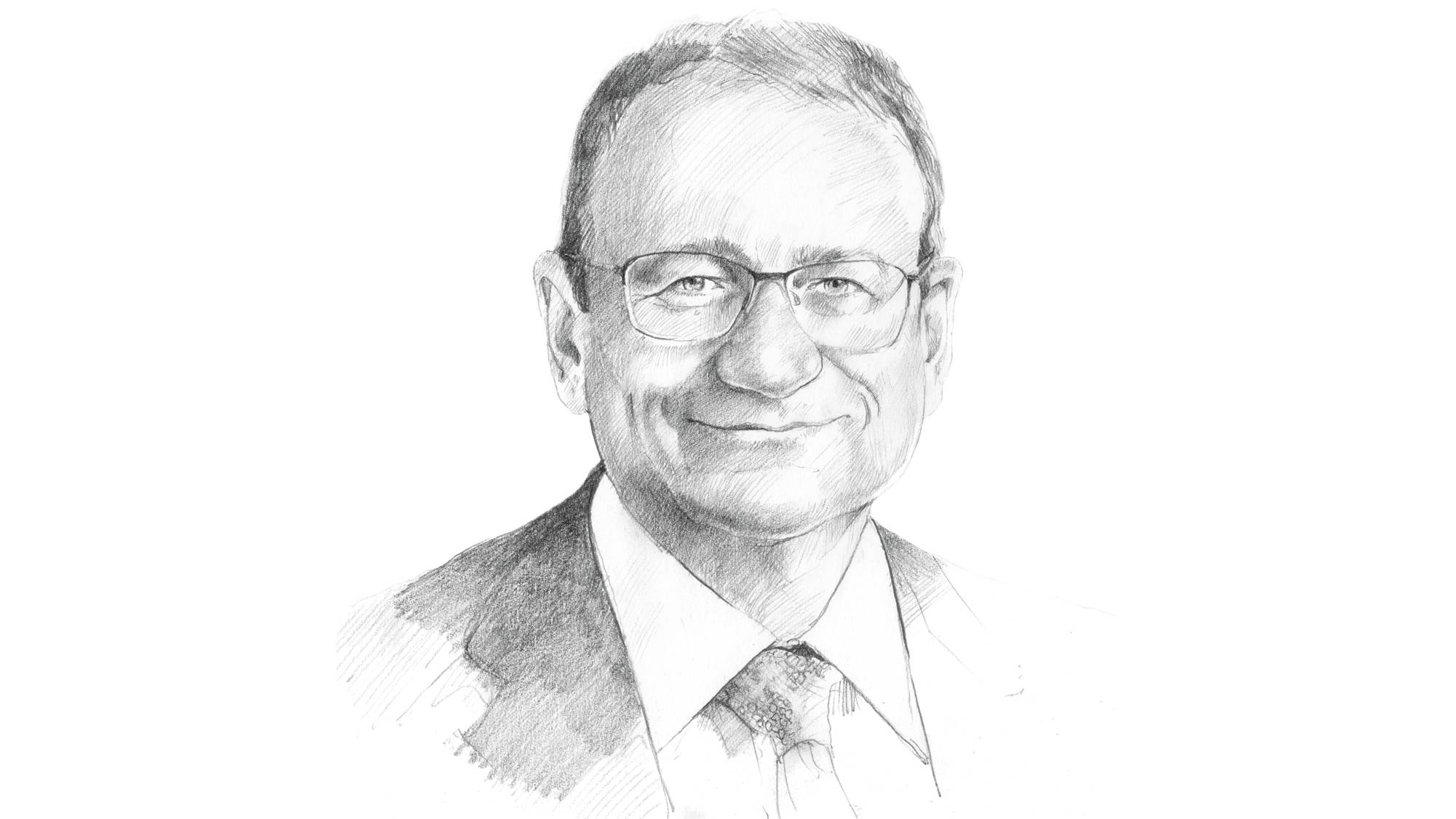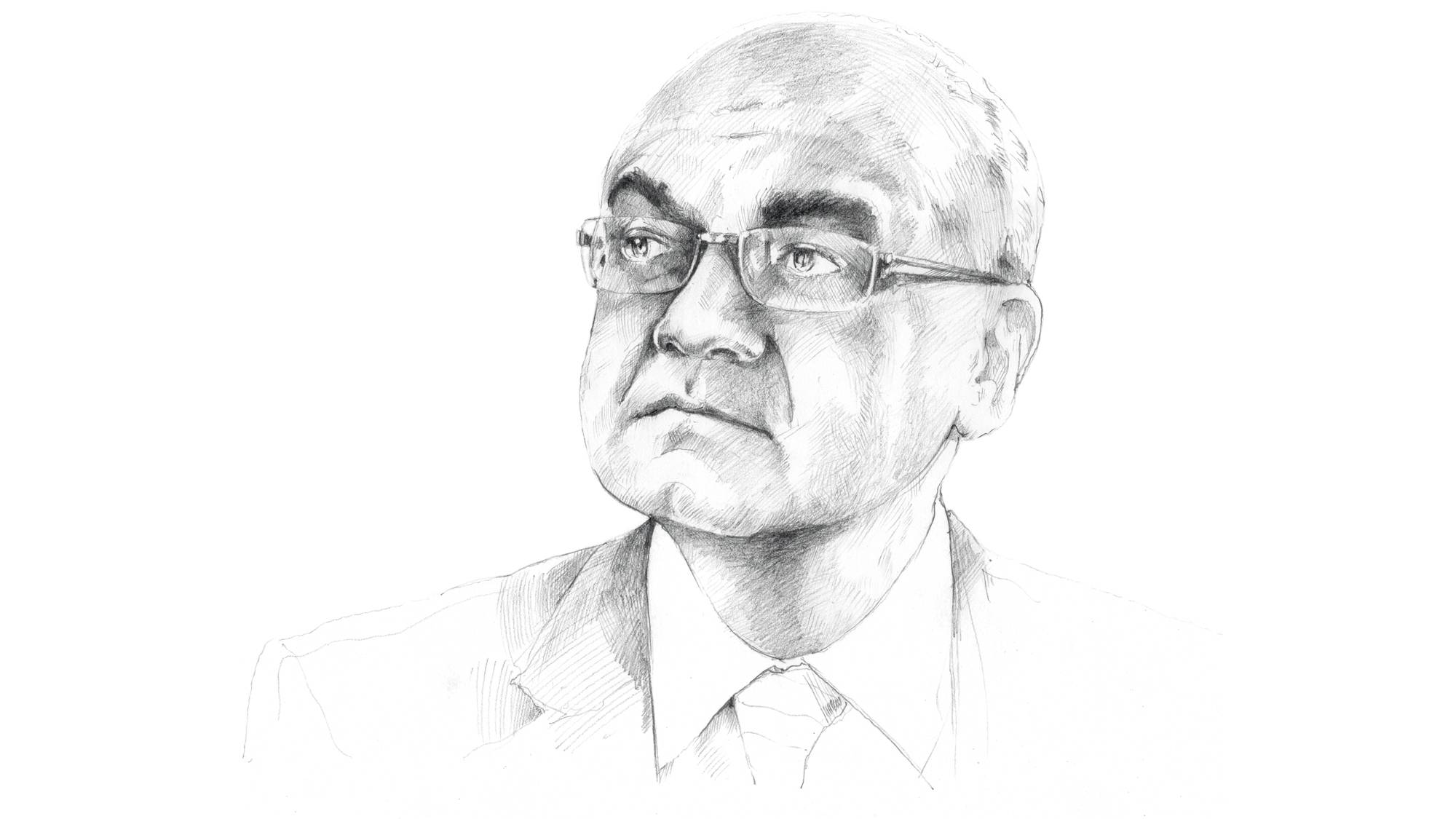View more rankings: Top 1000, private companies, revenue and market cap, and return on equity.
For professionals, a more comprehensive and complete database of Canadian corporate information is available for purchase in the Globe Data Store. We have improved on what we have offered in previous years in two separate packages based on whether your needs are research or sales prospecting. Find in-depth financial and contact information, total compensation for every CEO on the Top 1000 and more.

Dave McKay—Royal Bank of Canada
No. 1 on Top 1000 (profit up 8%)
Start date: August, 2014
Big bet: McKay—formerly head of RBC’s personal and commercial banking unit—inked the $5.4-billion (U.S.) purchase of California-based City National, the biggest acquisition by a Canadian bank since the financial crisis.
Spread it out: RBC has long preached diversification, and it’s something McKay deeply believes in. But domestic personal and commercial banking still accounts for roughly half of the bank’s profits.
Don’t get cocky: RBC regularly reports quarterly earnings of more than $2 billion and has long been the country’s most profitable company. That can breed hubris. And McKay has publicly admitted he worries about complacency, especially when archrival TD is eyeing the throne. He’s a bit boxed in, though: RBC has pledged not to let capital markets—its second-best unit—account for more than 25% of profits, for risk-management reasons.
Early gaffe: RBC recently jacked fees on retail and commercial accounts. Although other banks have been doing the same, RBC looked particularly bad—as if it were gouging clients. It did relent, at least in part, but see hubris, above.
Riches rule: Geographically, RBC is keen on growing in developed regions—Canada, the U.S. and Europe. The latter is particularly enticing for capital markets. But with hyper-expansion in this arm off limits, and with domestic lending cooling, wealth management is in the spotlight—hence the deal for City National, which is known as Hollywood’s bank and also serves ultra-high-net-worth clients in Manhattan.

Ryan Kubik—Canadian Oil Sands
No. 50 on Top 1000 (profit down 50%)
Start date: January, 2014
Challenge: Kubik knew what he was getting into—he’d held finance positions at COS for a dozen years. Its only asset is a 37% stake in the Syncrude joint venture, which has suffered chronic equipment failures and frequently disappointed investors as output came up short.
Silver lining: Exxon Mobil runs Syncrude under a management contract, so Kubik has no direct operating control. But he’s chairman of the owners’ management committee, and COS has the largest interest in the project. Lately, Syncrude’s performance has improved, with operating costs down and production up for longer periods.
The big “but”: That would be reason for applause, if it weren’t for the oil-price collapse. COS cut its dividend early in 2015 to preserve cash. That proved to be prudent, as its average selling price for synthetic crude in the first quarter of 2015 fell by nearly half, and cash flow was less than a quarter of what it was the year before. With the shares down sharply since Kubik’s appointment, investors are waiting for an oil recovery before passing judgment.

Joe Natale—Telus Corp.
No. 24 on Top 1000 (profit up 10%)
Start date: May, 2014
Two’s a crowd: Darren Entwistle rewarded his loyal No. 2 before he could be lured away. But the long-time CEO, who led Telus for nearly 14 years, didn’t exactly go far—Entwistle is now executive chairman and continues to lead quarterly earnings calls, providing high-level updates before Natale outlines operational details. Each man collected total compensation worth more than $9 million in 2014.
Major non-moves: Telus is based in Vancouver, but Natale opted to stay in Toronto (from where he led its consumer division) rather than trek west.
Vision: As Telus continues to gain on Rogers (which is now losing wireless market share) and steal TV subscribers from Shaw in the West, Natale says the company’s unceasing focus on customer satisfaction is central to its success. As Natale puts it: “If the experience is horrible, if the interaction is lacklustre, you won’t stick around for long.”

Dirk Van den Berghe—Walmart Canada
No. 1 on the private list
Start date: August, 2014
Cred: He’s new to Walmart but a veteran of the grocery wars, with deep international experience. That includes 15 years at global food retailer Delhaize Group, where he was working to transform the Belgian division by cutting costs and refocusing on fresh, affordable food.
The Target factor: Van den Berghe moved quickly to cash in on the retailer’s demise in Canada, scooping up 13 former Target outlets and one distribution centre. Now, he’s putting pressure on other grocers (we’re looking at you, Loblaws) by converting regular Walmart stores to include full supermarkets and adding fresh food to its e-commerce.
Think small: Canadians are increasingly moving to city centres and shopping locally. And Van den Berghe needed to bolster Walmart’s e-commerce to fend off the fast-expanding Amazon.ca. If Amazon introduces a full grocery delivery service in Canada—which it’s rolling out in the U.S.—that becomes even more critical.
No pressure: Walmart Canada has become a testing ground for senior execs. Van den Berghe took over from Shelley Broader, who was promoted to head of operations in Europe, the Mideast, Africa and Canada. Broader’s predecessor, David Cheesewright, followed the same path and now runs Walmart’s entire international business.

Victor Dodig—CIBC
No. 10 on Top 1000 (profit down 10%)
Start date: September, 2014
Major non-moves: With both Gerry McCaughey and COO Richard Nesbitt departing immediately after he took over, Dodig figured a little continuity was in order. His team includes many faces already familiar to the bank’s investors.
Think small: Dodig is pumping the pros of running a nimble lender. Global banks with far-flung operations, he recently noted, aren’t generating decent returns just look at Citigroup and HSBC. He’s betting investors will reward banks with high returns on equity and less grandiose strategies.
Challenges: There’s a contradiction in Dodig’s plan. CIBC’s biggest problem is that it’s already highly exposed to Canada—roughly 70% of its profits come from domestic personal and commercial banking. Diversifying revenues, then, is crucial. CIBC also has to reinvigorate its domestic bankers, who lost many high-end corporate clients when it prioritized risk management over revenue growth.
Guilt by proxy: In May, CIBC lost a “say on pay” vote, with shareholders frustrated over payouts to McCaughey and Nesbitt. Though that decision was made at the board level, it tainted Dodig’s first few months.
How to grow: CIBC is hell-bent on expanding in wealth management (Dodig’s former unit) and has been chasing acquisitions in the U.S. One problem: With the markets so hot, potential targets are pricey, forcing CIBC to hold off. Meanwhile, Canadian GDP growth has been hovering around 2%—a sign that better profits can be squeezed out of the personal and commercial unit. That’s because those profits are often viewed as a multiple of GDP—if GDP grows at 2%, retail profits can jump between, say, 4% and 6%.

Julien Billot—Yellow Pages
No. 97 on Top 1000 (profit up 7%)
Start date: January, 2014
Game plan: Billot is going all-in on digital—listing companies online, offering deals and coupons, and helping small businesses advertise their products and services. But they still print phone books, of course.
Major moves: Since taking over from Marc Tellier (whose 12-year reign involved acquiring print-based companies and borrowing heavily to pay a hefty dividend), Billot has launched a major marketing campaign; changed the company’s name back to Yellow Pages from Yellow Media; and hired 300-plus digital media and IT professionals. He has also made acquisitions focused on dining—reservation-management services, listing and review apps, and so on.
Cred: As head of Solocal Group, France’s Yellow Pages equivalent, he increased digital’s share of revenue to 63%.
Challenges: Besides conquering the Internet? The company went through a massive restructuring to rework its debt, but leverage is still sucking up cash flow that could otherwise be used to build the business.
The big “but”: Management likes to note digital revenue is growing nicely—but it has yet to offset print’s decline. Total revenue fell 9.7% in 2014, with digital up 9%, but print down 23%.
Silver lining: Before restructuring, Yellow Pages sold its once-prized asset, Trader Corp., which provided hefty cash flow from its automotive publications and websites. The sale forced the company to embrace digital much earlier than other print-era relics. In the third quarter of fiscal 2014, digital revenue surpassed print for the first time. The goal now is for digital sales to reach 80% to 90% of revenue by 2018.

Pierre Dion—Quebecor Inc.
No. 863 on Top 1000 (profit up 90%)
Start date: April, 2014
Rough start: Not long after controlling shareholder Pierre Karl Péladeau quit to run for the Parti Québécois, CEO Robert Dépatie left abruptly, citing health reasons—taking $7.8 million in severance with him, after just 11 months on the job.
First 100 days: Dion declared Quebecor “ready, willing and able” to expand its wireless business across Canada, but has since tempered expectations, saying he’ll wait for favourable regulatory conditions and protect the company’s balance sheet. That’s probably smart, because by 2019, the company plans to buy the 25% stake in its main subsidiary, Quebecor Media, still owned by the Caisse de dépôt et placement du Québec—expected to cost upwards of $2 billion.
Major moves: While emphasizing success in the Quebec wireless business—the company’s main shot at growth—Dion has sold off businesses vulnerable to weak advertising revenues, notably unloading Sun Media’s English newspapers to Postmedia for $316 million.
Long-term plan: Meanwhile, Dion has snapped up magazine and film assets in Quebec, and affirmed Quebecor’s strategy of owning both content and connectivity operations.

Michael Medline—Canadian Tire
No. 43 on Top 1000 (profit up 8%)
Start date: December, 2014
Cred: The 14-year Canadian Tire veteran was on the fast track to the corner office—until 2010, when he abruptly left the company. He soon returned, stick-handling the 2011 takeover of Forzani Group, which owns Sport Chek. A decade earlier, he had orchestrated the Tire’s play for apparel chain Mark’s.
The Target factor: Medline helped fight off the discount retailer—and other rivals—with sports sponsorships, Canadiana marketing and digital promotions, including Facebook flyers. But it still faces stiff competition from Walmart, Costco and Amazon.ca, which leads us to...
Job one: Fixing e-commerce. In 2009, Canadian Tire ditched online sales altogether. Two years later, it began selling tires online. Late in 2013, it introduced e-sales with store pickups only. Meanwhile, it’s been using its sporting-goods division and Sport Chek as testing grounds for digital initiatives, and has hired a bevy of tech-savvy new execs to update the operation and launch a digital loyalty program.
Bottom line: Medline needs to find another acquisition in a related field to keep growing and use excess cash.

Ron Boire—Sears Canada
No. 984 on Top 1000 (profit down 176%)
Start date: October, 2014
Dubious distinction: Boire is the fourth Sears Canada CEO in just over three years.
Challenges: Where do we start? Revenues have fallen for seven years straight. Last year, the retailer posted a net loss of $338.8 million.
Hail Mary play: To focus on top sellers in its core categories—home goods, mattresses, children’s merchandise, clothing and footwear—while beefing up e-commerce.
Big break: Target’s abrupt exit from Canada eased competition—at least a bit.
Quick fix: Boire follows in the steps of his predecessors, raising cash by spinning off valuable real estate holdings. Over the past few years, Sears has sold some of its most lucrative store leases. You can bet Edward Lampert has his eyes locked on Canada—he and his U.S. hedge fund, which controls troubled parent Sears Holdings Corp., have collected generous dividends from assets sold by the Canadian business.
Big question: Will Lampert give Boire the tools—and the power—he needs to turn things around?

Jerry Storch—Hudson’s Bay Co.
No. 80 on Top 1000 (profit up 192%)
Start date: January, 2015
Cred: Storch is a seasoned merchant—former vice-chairman of Target Corp. in its heyday and CEO of Toys “R” Us Inc.
Challenges: Competition in the upscale segment is hot, with Nordstrom invading HBC’s turf and chi-chi Holt Renfrew sprucing itself up. The turnaround of the Bay—once a basket case—is still a work in progress. Lord & Taylor, an HBC-owned chain in the U.S., has underperformed other parts of the business. Storch is also charged with rolling out Saks Fifth Avenue here in Canada, along with its sister discount chain, Off 5th.
The overlord factor: And he’ll do it all under the watchful eye of Richard Baker, the U.S. real estate tycoon and principal HBC owner who remains the so-called “governor” and executive chairman.
Digital dreams: Storch brought online shopping to Target in the late 1990s. That’s a key focus at HBC, which is investing heavily to upgrade its e-commerce (which last year accounted for about 11% of sales, mostly from Saks, compared with 18% at Nordstrom), and blend the digital and bricks-and-mortar operations. Storch has admitted some key competitors are further ahead on that score, but “we’re going to fly by all of them.”
No pressure: Baker bought Saks in late 2013 for $2.9 billion (U.S.), with the first Canadian store set to open in 2016. It’s Storch’s job to make it work.

Bharat Masrani—Toronto-Dominion Bank
No. 2 on Top 1000 (profit up 19%)
Start date: November, 2014
Steady as she goes: Of the four bank CEOs installed in the past two years, Masrani has said the least about strategy. That’s because his vision is largely an extension of former CEO Ed Clark’s, which means TD will stick to its roots of emphasizing customer service. But Masrani has signalled he’ll focus more on wealth management and wholesale banking.
Challenge: Since spending roughly $18 billion on two northeast U.S. banks in the aughts, TD is still trying to eke decent returns out of them. That’s tough, because the U.S. banking world is cutthroat, with boatloads of rival lenders chasing the same clients.
Major move: At home, TD recently closed another major credit card deal, buying half the Aeroplan portfolio. Now that it has addressed that last remaining weakness in its product portfolio, it’s keen to beef up wealth management in Canada.
Clean-up duty: After striking major U.S. acquisitions over the past decade, TD needs to streamline. That led to a $337-million restructuring charge last quarter—most of which was felt south of the border.
Betting on America: There’s hope that loan growth in the States will pick up, and TD will benefit from a U.S. interest rate hike. The bank invests its excess deposits, and right now it’s making minimal returns. Once rates climb, so should Treasury yields—and TD’s profits.